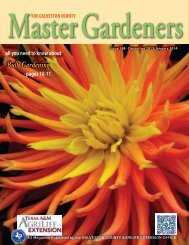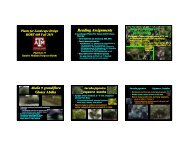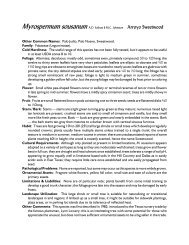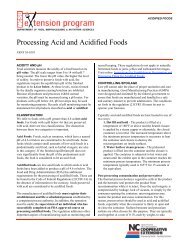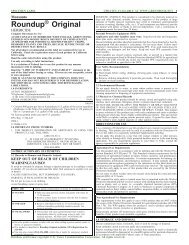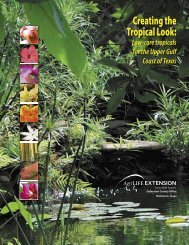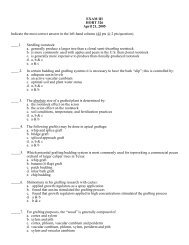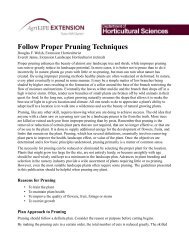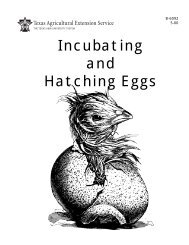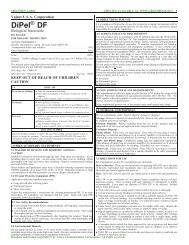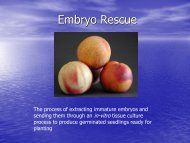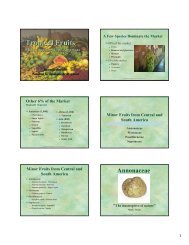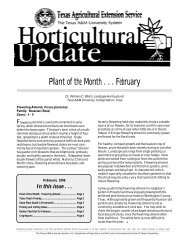Guide to PAS 2050 How to assess the carbon ... - Aggie Horticulture
Guide to PAS 2050 How to assess the carbon ... - Aggie Horticulture
Guide to PAS 2050 How to assess the carbon ... - Aggie Horticulture
You also want an ePaper? Increase the reach of your titles
YUMPU automatically turns print PDFs into web optimized ePapers that Google loves.
30<br />
Section II: Calculating product <strong>carbon</strong> footprints<br />
Example: If <strong>the</strong>re are 100 small mills producing<br />
flour, measure <strong>the</strong> activity data and emissions at<br />
10 mills chosen at random, <strong>the</strong>n take <strong>the</strong><br />
weighted average.<br />
One method for determining <strong>the</strong> sample size is <strong>to</strong> use<br />
a square root approach: randomly select <strong>the</strong> square<br />
root, i.e. ÷(<strong>the</strong> <strong>to</strong>tal number of sources).<br />
This technique should be used in accordance with data<br />
quality rules. For example, a wide range of answers from<br />
<strong>the</strong> sampling would suggest <strong>the</strong> need for fur<strong>the</strong>r sampling<br />
<strong>to</strong> draw a clearer picture of <strong>the</strong> weighted average.<br />
Recycling<br />
The approach <strong>to</strong> calculating emissions from recycled<br />
inputs depends on <strong>the</strong> material (e.g. aluminium, glass,<br />
plastic) and whe<strong>the</strong>r <strong>the</strong> material's recycling system is<br />
part of a product system or not. A closed loop system<br />
implies that when recycled, <strong>the</strong> material does not<br />
change and is used again for <strong>the</strong> same purpose. For<br />
example, PET (polyethylene terephthalate) bottles can<br />
only be manufactured using recycled PET bottles (not<br />
o<strong>the</strong>r PET material). The material system is <strong>the</strong>refore<br />
considered closed.<br />
To calculate <strong>the</strong> emissions of an input material<br />
containing recyclable matter:<br />
1. Assess whe<strong>the</strong>r <strong>the</strong> recycled material is derived<br />
from a ‘closed-loop’ process (if not, see below)<br />
2. Determine <strong>the</strong> proportion of input from recycled<br />
content vs. virgin material<br />
• Use <strong>the</strong> industry average unless <strong>the</strong> product's<br />
inputs are known <strong>to</strong> be different, e.g. if <strong>the</strong><br />
specific product only uses 100% recycled PET<br />
bottles<br />
3. Collect data on emissions caused by creating input<br />
material through recycling and virgin<br />
4. Calculate <strong>the</strong> weighted average emissions per unit<br />
input according <strong>to</strong> <strong>the</strong> proportion of recycled vs.<br />
virgin material<br />
For inputs with recycled material that is not part of a<br />
closed-loop recycling system, <strong>PAS</strong> <strong>2050</strong> requires that



